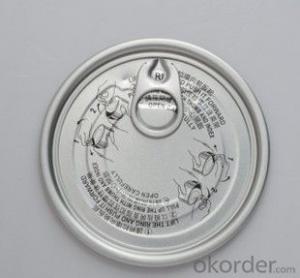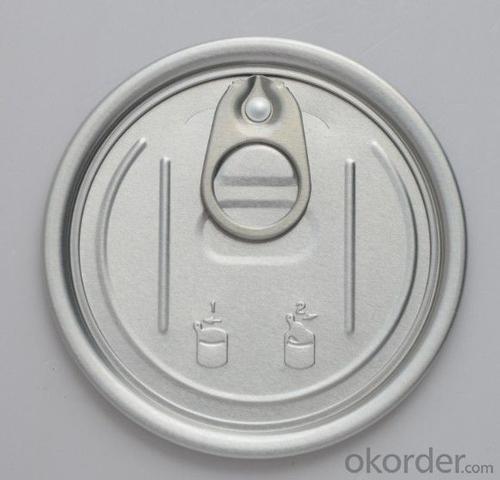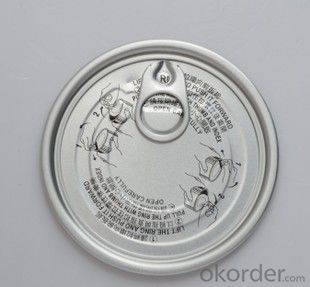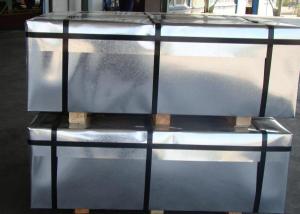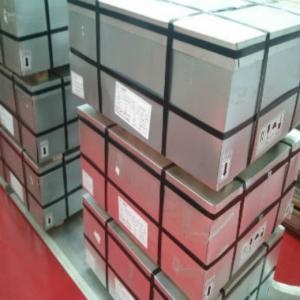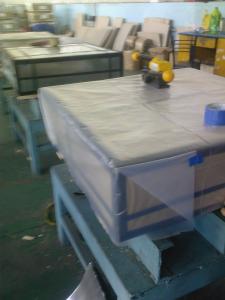High Quality EOE 502, Alumnium Material
- Loading Port:
- China main port
- Payment Terms:
- TT OR LC
- Min Order Qty:
- 1000000 PCS
- Supply Capability:
- 10000000 PCS/month
OKorder Service Pledge
OKorder Financial Service
You Might Also Like
Detailed Specification:
502 aluminum bottom lid
diameter:outer diameter:136.7+/-0.1mm
iner diameter:126.5+/-0.1mm
used for packing dry food,such as milk powder.
package:1200pcs/ctn
bottom lid.packing ,food packaging,lid, easy open end,tennis lid,
Can lid,Easy opener,EOE,eoe,End cap,
Bottle lid,Tinplate can,
Our packing
We could offer package as customers require, by carton or by wooden pallet.
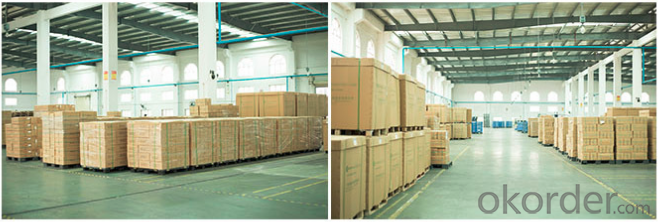
Our Workshop
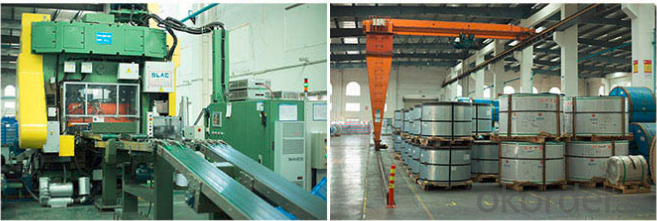
FAQ
1.Q: What is the material of EOE?
We can offer both tinplate and aluminum material made EOE;
2.Q:Could you offer samples for our testing?
YES, we could offer sampler for free if needed;
3. Q:Can you make new mold with customized size I need?
YES, We can make mold for you if reach some qty.
- Q: How is tinplate coated for electrical enclosures?
- Tinplate is coated for electrical enclosures through a process called electroplating, where a layer of tin is applied onto a steel sheet. This is achieved by immersing the steel sheet into an electrolyte solution along with a tin anode, and passing an electric current through the solution. The electric current causes the tin ions in the solution to be attracted to the steel sheet, resulting in a thin and uniform tin coating on its surface. This tin coating provides electrical conductivity and corrosion resistance, making the tinplate suitable for use in electrical enclosures.
- Q: What are the regulations regarding tinplate packaging?
- The regulations regarding tinplate packaging vary depending on the country and the specific product being packaged. However, some common regulations include restrictions on the use of certain chemicals in the coating of tinplate, requirements for labeling and product information, and guidelines for food safety and hygiene. It is important for manufacturers and distributors to familiarize themselves with the specific regulations in their target market to ensure compliance.
- Q: How is tinplate coated with organic coatings?
- Tinplate is coated with organic coatings through a process known as coil coating. In this process, the tinplate is cleaned and pre-treated to ensure proper adhesion of the organic coating. The organic coating, usually a resin-based material, is then applied to the tinplate in a continuous and uniform manner. The coated tinplate is then cured, either through heat or UV radiation, to ensure the coating adheres firmly to the surface. This coating provides protection against corrosion and enhances the appearance of the tinplate.
- Q: What are the quality control measures for tinplate production?
- Quality control measures for tinplate production typically include various inspections and tests at different stages of the manufacturing process. Some common quality control measures include: 1. Raw material inspection: The quality of the steel used for tinplate production is assessed, including its chemical composition, thickness, and surface finish. Any deviations from the desired specifications are flagged. 2. Coating inspection: The tin coating applied to the steel is examined for uniformity, adhesion, thickness, and absence of defects like pinholes or scratches. This ensures the protective and aesthetic qualities of the tinplate. 3. Surface inspection: The surface of the tinplate is inspected for any visible defects such as dents, scratches, or irregularities. This ensures the overall quality and appearance of the final product. 4. Dimensional control: Tinplate sheets or coils are measured to ensure they meet the specified dimensions and tolerances. This includes verifying the length, width, thickness, and flatness of the tinplate. 5. Tinplate performance testing: Selected samples are subjected to various mechanical and chemical tests to assess their performance. These tests can include assessments of corrosion resistance, adhesion, hardness, and tin coating integrity. 6. Packaging inspection: The final tinplate products are inspected for proper packaging, labeling, and protection. This ensures that the tinplate reaches customers in good condition and meets their expectations. By implementing these quality control measures, manufacturers can maintain consistent product quality, meet customer requirements, and ensure the reliability and functionality of tinplate products.
- Q: Tinplate also known as what? What is the density of it?
- Tin plays a major role in preventing corrosion and rusting. It will be the steel strength and formability and corrosion resistance of tin soldering, and beautiful appearance with a material, corrosion resistant, non-toxic, high strength and good ductility properties.
- Q: How is tinplate used in the cosmetics industry?
- Tinplate is commonly used in the cosmetics industry as packaging material for various products such as lip balms, creams, and powders. Its corrosion-resistant properties make it an ideal choice for ensuring the longevity and quality of these cosmetic items. Additionally, tinplate's ability to be easily printed on allows for attractive branding and labeling of cosmetic products.
- Q: Can tinplate be used for high-speed packaging lines?
- Yes, tinplate can be used for high-speed packaging lines. Tinplate, known for its strength, durability, and corrosion resistance, is commonly used in the food and beverage industry for packaging products that require high-speed production. Its smooth surface allows for efficient printing and labeling, making it a suitable choice for high-speed packaging lines.
- Q: Can tinplate packaging be used for pet food products?
- Yes, tinplate packaging can be used for pet food products. Tinplate is a suitable material for packaging pet food due to its durability, resistance to corrosion, and ability to maintain the freshness and quality of the food. Additionally, tinplate cans are also safe for pets as they do not leach harmful chemicals into the food.
- Q: What are the different sizes and shapes of tinplate packaging available?
- There are various sizes and shapes of tinplate packaging available, ranging from small tins for individual items such as lip balm or mints, to larger tins for products like cookies or tea. The shapes can also vary, including round, rectangular, or square tins, as well as specialty shapes like heart or star-shaped tins.
- Q: What are the typical tooling costs for tinplate production?
- The typical tooling costs for tinplate production can vary depending on factors such as the complexity of the design, size of the production run, and specific requirements. However, on average, tooling costs for tinplate production can range from a few thousand dollars to tens of thousands of dollars.
Send your message to us
High Quality EOE 502, Alumnium Material
- Loading Port:
- China main port
- Payment Terms:
- TT OR LC
- Min Order Qty:
- 1000000 PCS
- Supply Capability:
- 10000000 PCS/month
OKorder Service Pledge
OKorder Financial Service
Similar products
Hot products
Hot Searches
Related keywords

